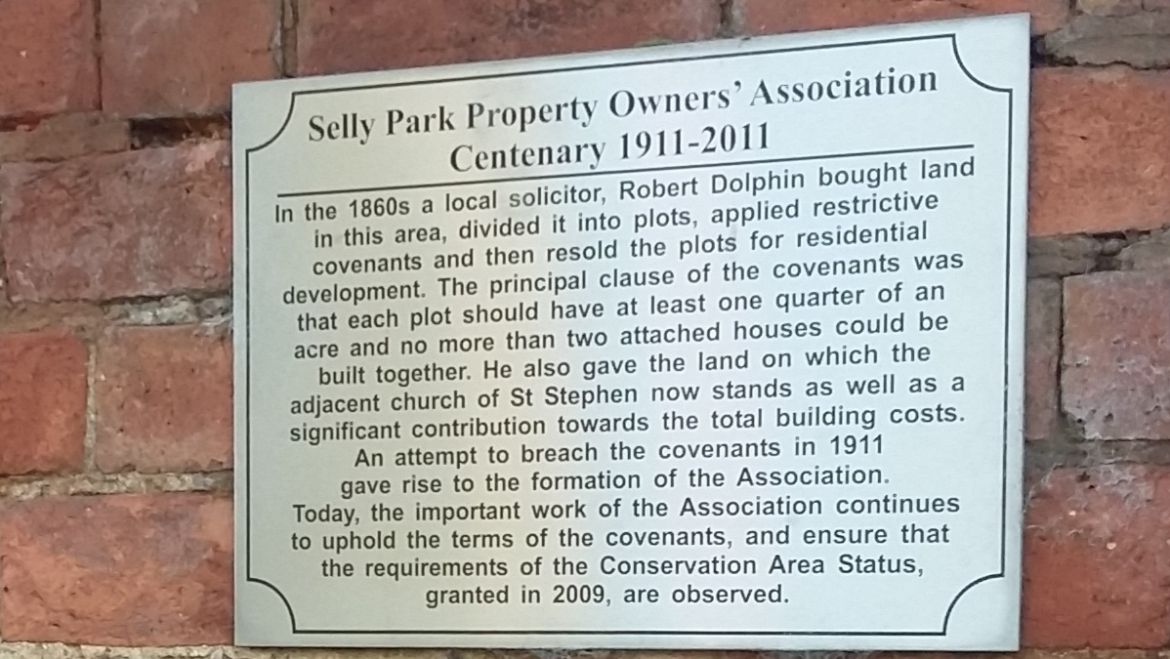St Stephen’s Church and the surrounding area of Selly Park are the legacy of a nineteenth century attorney and land speculator called Robert Dolphin. Dolphin bought Selly Hall and its estate in 1835. This is the land which is now called Selly Park. Dolphin sold his land to The Counties Benefit Building Society to lay out the estate roads and drains and to oversee the sales. He also put a number of covenants on the land so that it was not developed too densely and so that the residents did not carry out any businesses or ‘noxious’ activities such as brickmaking or running a pub!
Dolphin lived briefly at Selly Hall, a small, Georgian country house, now part of the convent on Selly Park Road. He then bought a farmhouse on Bournbrook Road, which he developed into Selly Hill House. Only the garden pond now remains from this house.
In 1870, the year before he died, Robert Dolphin became part of a committee of mainly local, wealthy men who were planning to build a church at the centre of the estate (see below). He donated land and £600 to this project but he died before the church was completed. His spinster sisters, Mary and Ann Dolphin, moved to Selly Hill House from Sydenham in South London. They donated a further piece of land for the churchyard which, they stipulated, was not to be used for burials. In this way they continued their brother’s care for the environment of Selly Park.
Dolphin’s youngest sister, Mary, lived until 1886 and must have worshipped at St Stephen’s on many Sundays.
Local members of the planning committee for the church:
- William Webley, gun maker of 63 Uplands Road
- Charles Winn of the Uplands, plumbing engineer
- William Docker, lawyer of Selly Wick House
- Lord Calthorpe, Edgbaston land owner
- Thomas Harrison, Highfield House, music seller
- Whitlock, Ferndale, Oakfield Road, photographer
- John Jaffrey, Baronet, newspaper owner. His daughter, Anne, laid the church foundation stone in March 1870 and that of the vestry in 1925

